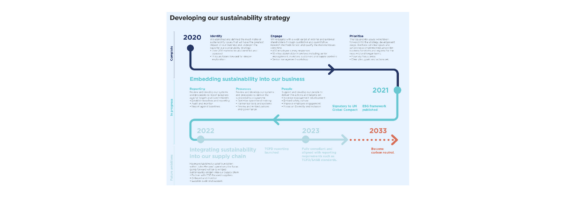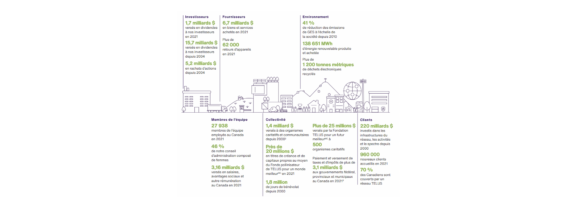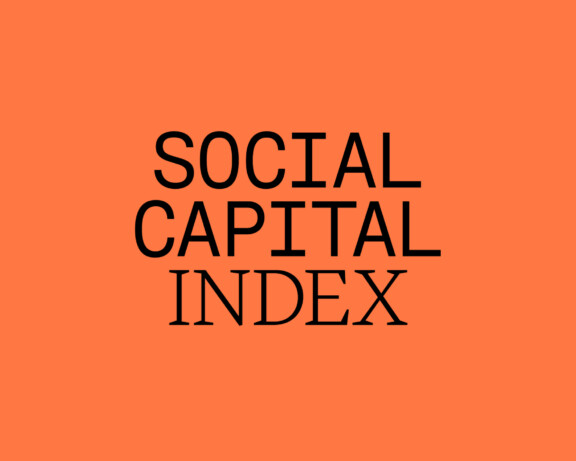Best Practices for ESG Reporting and Communications

Share:
ESG (environmental, social and governance) initiatives must be an integral part of a company’s strategy and be communicated through an integrated report (a combination of an annual report and an ESG report). It is essential to consider the target audience for reporting in order to be able to choose the relevant benchmarks for a company.
It is no longer enough for businesses to demonstrate their corporate responsibility by making donations. They must clearly demonstrate how they create value for all their stakeholders.
For an in-depth understanding of best practices for ESG reporting, we invite you to read our article on this topic: 6 criteria to recognize or create a quality ESG report.
Visual aids can make all the difference
The communication of extra-financial information can often be complex and not very accessible. Integrating illustrations or visuals into a report helps to clarify and simplify the information.
Reporting GHG emissions is a good example of a complex topic. It is broken down into three scopes at different points in a company’s value chain and can be difficult to explain. Energir and Organic Basics demonstrate, in a pictorial and segmented way, the GHG emissions related to each phase of their value chain. At a glance, it is possible to understand which phase of their value chain contributes the most to carbon emissions.
A quick reminder of the three scopes of the Greenhouse Gas Protocol :
- Scope 1 : Direct GHG emissions related to the company’s activities, from sources it owns or controls (e.g., fuel used by a fleet of corporate vehicles)
- Scope 2 : Indirect GHG emissions from the production of electricity that is purchased and used by the company (e.g., electricity supplied by Hydro-Québec)
- Scope 3 : All other indirect GHG emissions spread throughout the company’s value chain (e.g., means of transport chosen by employees to get to their workplace)

Here, Pomerleau illustrates its value chain and business model in a simple and clear manner through its ESG performance platform called Perspective.
In the following chart, Chipotle showcases the intermediaries in its supply chain. Once again, a visual aid like this helps to facilitate the understanding of a complex process.

Roadmap to achieve corporate objectives
Menzies, a British aircraft de-icing company, has drawn up a roadmap of its actions leading to carbon neutrality. This summary could have been more detailed, but in general, it is clear that the company understands the issues to be addressed. This timeline allows us to visualize the steps to be taken to achieve carbon neutrality.

Communicating the progress of each objective
The Chipotle example demonstrates the progress of the company’s initiatives while being transparent in the postponement of some of its objectives. Its “below target” section explains the reasons why its targets were not met.
European grocery chain Lidl’s overview provides a summary of the key elements relating to its commitments: goals, indicators, results over the past year, progress since the baseline year, and progress status. At a glance, you can see and understand where Lidl stands in the implementation of its initiatives.

Choosing transparency over empty promises
In its sustainability report, Organic Basics is very transparent by dedicating a part of its web page to explaining in great detail its mistakes and what was learned from them.
By acknowledging and communicating the limitations of certain solutions, the company demonstrates its understanding of the various issues and doesn’t try to exaggerate the real impact of its initiatives.

Everlane, an American apparel company, is being transparent by detailing the costs associated with the production of its clothing. In order to ensure traceability, the brand displays the manufacturing companies it deals with. The standards required of suppliers are a clear indication of the company’s criteria. Although Everlane has been criticized in the past, it proves that a company can evolve, question itself, and change for the better.

Stakeholder involvement
One of the most important components when undertaking a CSR (corporate social responsibility) initiative is to consult with stakeholders. For example, the B Corp certification attests that companies meet the best social and environmental standards while creating value for their various stakeholders. The B Lab evaluates the impact a company has on its employees, its community, the environment, and its customers, while also assessing its governance.
Stakeholder involvement is a practice common to all known reporting standards and benchmarks (GRI, ISO, SASB, AA1000). Engaging stakeholders is a must, but it is equally important to communicate the positive impacts generated for stakeholders.
In its annual report, BDC, which is also B Corp certified, clearly demonstrates the value it creates for its various stakeholders.

While not B Corp certified, Telus does present in its ESG report the benefits to its investors, suppliers, team members, community, and customers

Frameworks and benchmarks
It is very common to see the icons of the UN Sustainable Development Goals (SDGs) used in a report, but often the link between the actions implemented by the company and the SDGs is less clear. This is called SDG washing. In this report, Lidl describes the SDG targets to which it contributes, which shows that the company really understands how its actions are linked to the SDGs.

Integrated reporting
Danone demonstrates the integration of ESG criteria into its business model by producing a single report that addresses both financial aspects, as well as social and environmental indicators. In this overview of the company’s highlights, we can see the economic elements as well as the social and environmental elements measured.

Materiality matrix
Many reports include a materiality analysis, which clearly demonstrates the consideration of stakeholders in a company’s ESG strategy. A materiality matrix helps to prioritize the issues that are important to both the company and its stakeholders. Both Danone’s and Lidl’s reports include this matrix in their reports. By including a materiality assessment in their report, companies demonstrate the involvement of their stakeholders in decision-making.

In conclusion, if complex elements are illustrated and represented in a digestible way, issues and key messages become more accessible to a wider audience. Design is a big part of this! By making these reports attractive, we encourage the public to take an interest and understand the impact that companies can have on society and the environment.


